What are Bare Root Plants? The Easy (and Cost Effective) Way to Plant That Can Fill Up a Backyard in Winter
If your garden is looking a little lean, now is the time to think about adding bare root plants to fill the gaps. It's an easy (and economical) way to grow your collection
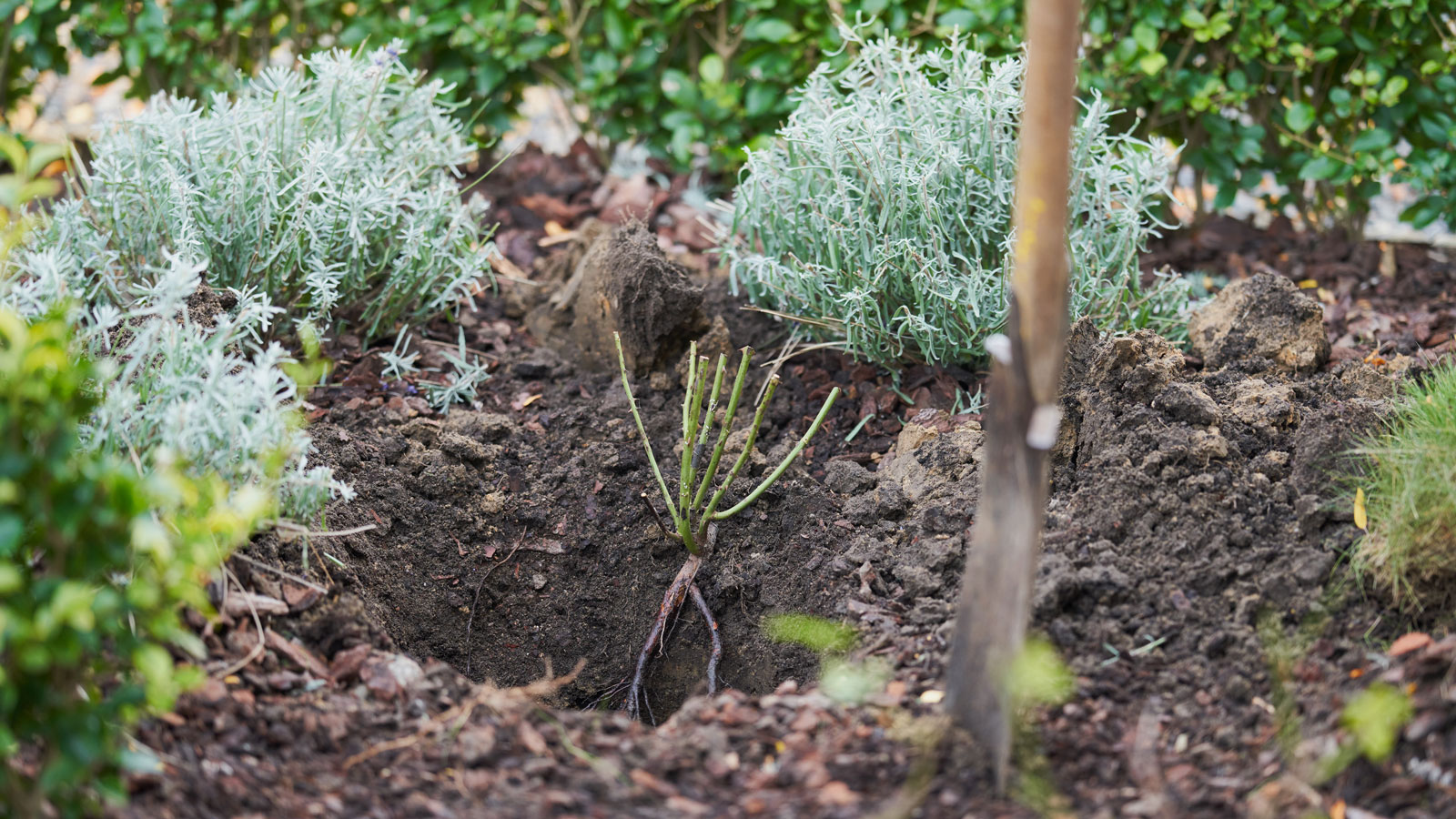
Plants can be supplied to you in many ways, usually in pots but there are alternatives. In fall and winter you can buy cheaper, bare root plants that have the additional environmental benefit of not being sold in plastic pots, which keeps transport costs down too.
They might look a bit twiggy and uninspiring now (these skinny twigs are called ‘whips’ because of their slim shape) but just watch them grow. They will soon green up when they become established, and will fill your garden with interest.
In more good news, now is the perfect time to plant bare root plants in the ground before the colder weather sets in. Bare root plants are taken from the ground by specialist suppliers during the dormant period but are only available for a limited time and need to be planted out only when weather conditions are suitable.
A range of perennials, shrubs, fruit bushes, hedging plants and trees are all available in bare root form, so there's something for everyone. Bare root trees can be ordered from online stockists and plant nurseries starting in fall. There is usually a greater variety of cultivars on offer than you'll find in garden centers. You can also try visiting specialist plant nurseries. Now find out more about bare root plants, including when and how to plant them in a modern garden.
What are bare root plants?
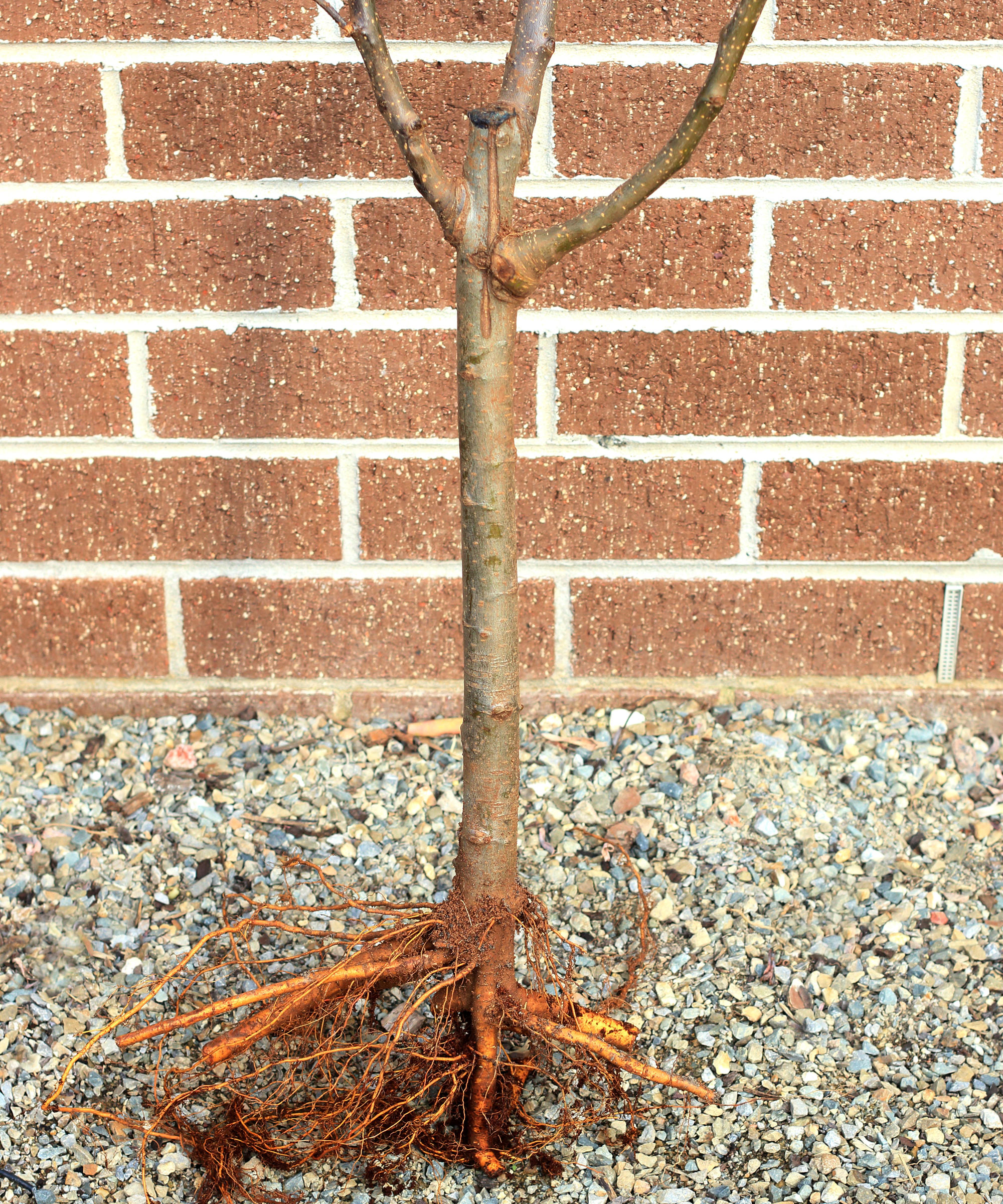
When planting a bare root apple tree rehydrate the roots in a bucket of water if they feel dried out
Bare root planting uses young trees and shrubs that are lifted out of the ground by specialist nurseries when they’re dormant, shipped out to you, and replanted as soon as possible where you want them to grow.
They are easy to order, buy and plant, but they need to be treated with care once they arrive if they're to reach their full potential. They don’t usually look anything special when you unwrap them but they soon start putting on impressive growth.
Bare root fruit trees, and other varieties of bare root tree, are often easier to grow than pot grown trees, as they get established and grow more quickly. This is because they start life in soil rather than compost, which is better for the roots when they're planted out as it's more of the same rather than a transition known as 'transplant shock' that takes some getting used to.
Why choose bare root plants?
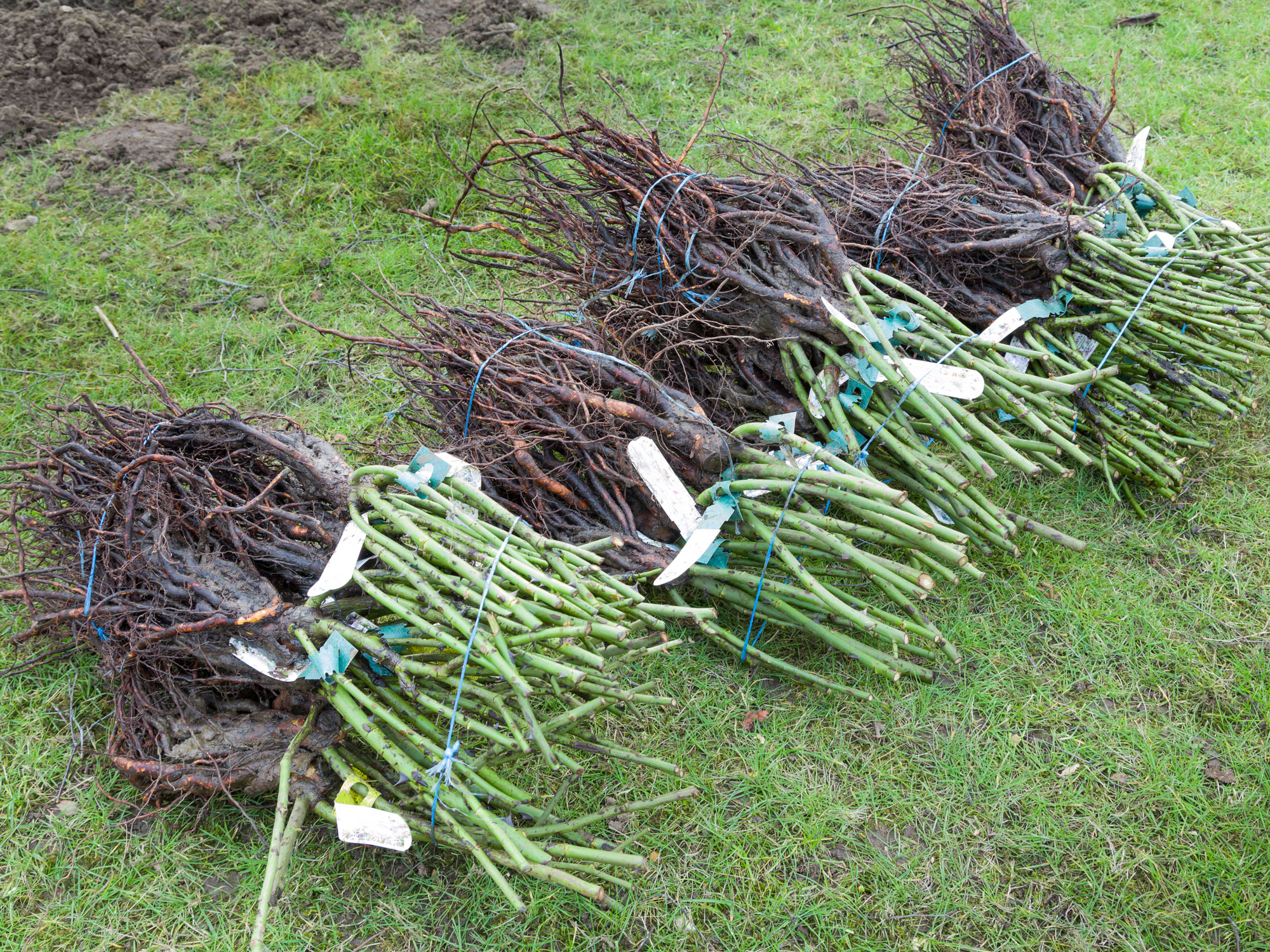
There are many reasons for choosing bare root plants over container gardening grown ones. One of the main considerations is that there is a greater variety of bare root plants to choose from, and they tend to be more robust and sturdier than container grown varieties.
'As their abundant, fibrous roots aren't confined by a container, bare-root trees get off to a more vigorous start compared to containerized roots, which typically need more time to adjust to transplanting,' say the tree experts at the Arbor Day Foundation. 'Bare-root trees typically surpass the size of larger containerized trees in only a few years.'
This means you are more likely to succeed with them, especially as they are less likely to suffer from root rot. To explain (without getting too technical) this is due to the differences in water retention between compost (container grown) and soil (bare root grown).
Bare root trees are also cheaper to buy and transport. If you're looking for larger trees and shrubs it's a much more budget-friendly option compared to pricier container-grown plants. Another significant advantage of bare root planting is that it’s an economical way of buying plants if you need lots of them, say if you want to make a screening hedge.
Planting bare root trees is the environmentally friendly option as it's more carbon positive as there is no need for plastic pots, making it an all-round win.
When should they be planted?
You will get the best results if you plant bare root trees in winter, between the months of November and March. You can plant them at any time during the plant's dormant phase, as long as the conditions are right. This means the ground shouldn't be frozen or waterlogged, and the weather isn't icy or very windy.
The main benefit of planting bare root plants now is they will develop a good root system before the temperature drops. So it's the best time to start (or add to your existing) collection of trees, shrubs, fruit bushes and roses.
How to plant them
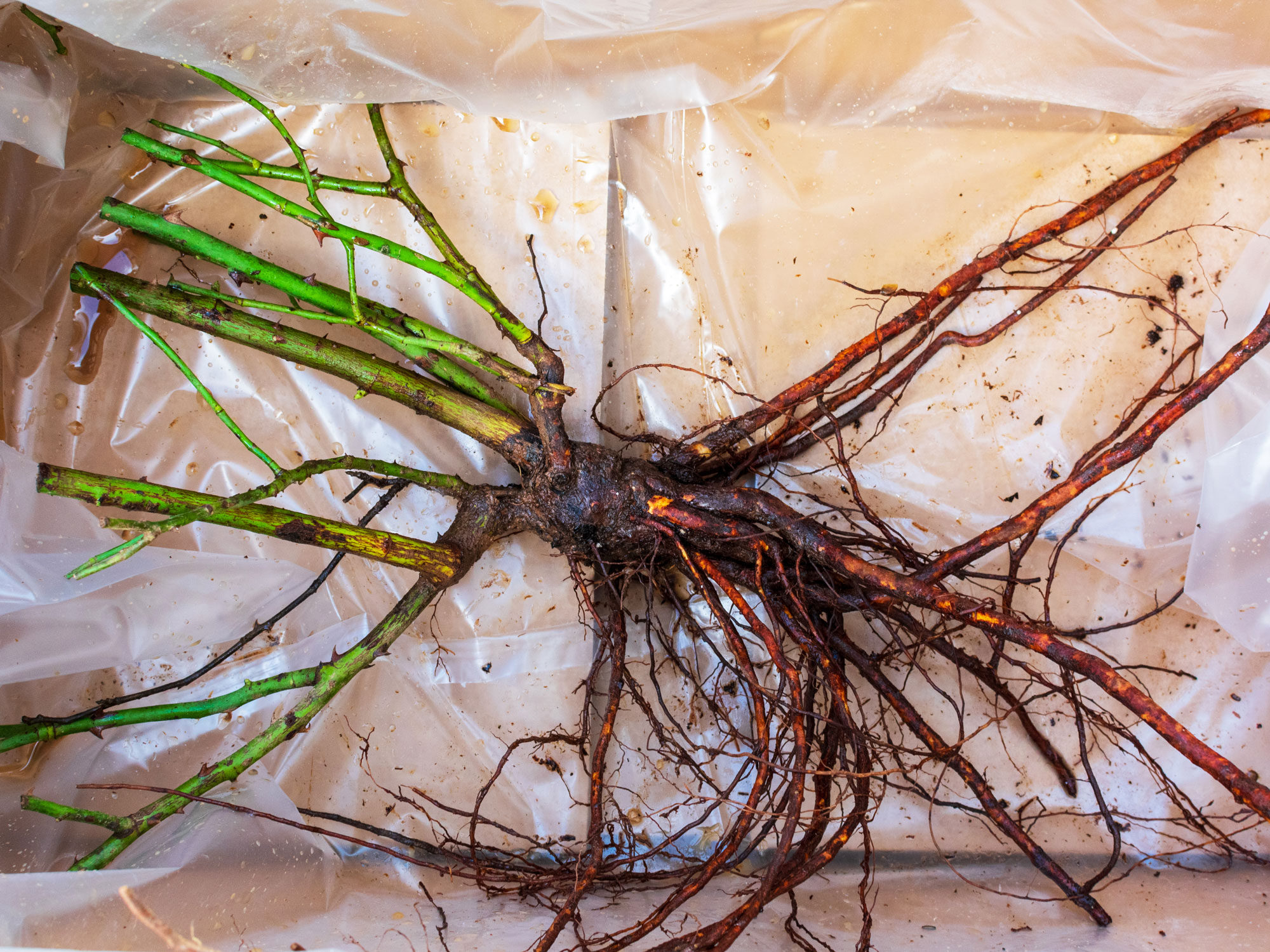
When planting a bare root rose bush make sure the rose has enough space, so that the roots are not in competition from neighbouring plants
Whatever your choice of bare root plant, find out how big it will be when mature to ensure you allow enough space in your chosen location. Check the growing guide to work out how big it's likely to grow.
The most common reasons that new bare root plants fail to thrive are because they are planted too deep or they're not watered enough while becoming established. So take the time to get this crucial stage right.
If your bare root plants arrive but you can't plant them immediately, remove them from the outer packaging and transfer to a cool, frost-free place until you're ready to plant them. Just make sure they are not exposed to the air as they will dry out so keep the roots covered with the original wrapping.
First spread out the roots of your plant and work out how big the hole needs to be to accommodate them. Then dig a large square that’s wide enough for your plant. It will probably be a hole that's wider rather than deeper. A big mistake with bare root varieties is to plant them too deep. Loosen the bottom of the hole with a fork to ensure good drainage.
Then soak the roots of your plant in lukewarm water in a bucket for a couple of hours to rehydrate them. Next transfer your plant to the hole. As long as the roots are entirely covered, it’s better to plant too shallow than too deep.
'Plant the tree at the same depth it stood in the nursery, with plenty of room for the roots,' according to the Arbor Day Foundation. 'Partially fill the hole, firming the soil around the lower roots. Do not add soil amendments such as peat or bark. Do not use fertilizer, potting soil, or chemicals on your new trees.'
Finally, firm the soil around the plant and soak with water. You will need to keep an eye on your plant, especially if the weather is dry. It's a good idea to add a layer of protective mulch too.
How to plant bare root plants in a container

Acer palmatum (Japanese maple)
If you live in the city and only have a small backyard or balcony area you may be considering planting bare root plants in pots. It's pretty similar in terms of what to do when it comes to how to plant them.
Carefully unpack your bare root tree once it arrives. Separate the roots and soak the roots in a bucket of water for a couple of hours. Use a container that's large enough to accommodate your bare root plant once it starts growing. Take a look at the growing guide and see how big it will be in a couple of years' time, and factor that in.
You will need good drainage so add plenty of crocks or gritty material to the base. Part fill the pot with soil that's recommended for your type of plant, place the plant centrally in the pot, and carefully spread out the roots. Fill in with the rest of the soil and firm into place. Finally, water well and continue to water to keep the soil moist and provide the growing conditions your plant craves.
Best bare root plants to choose from
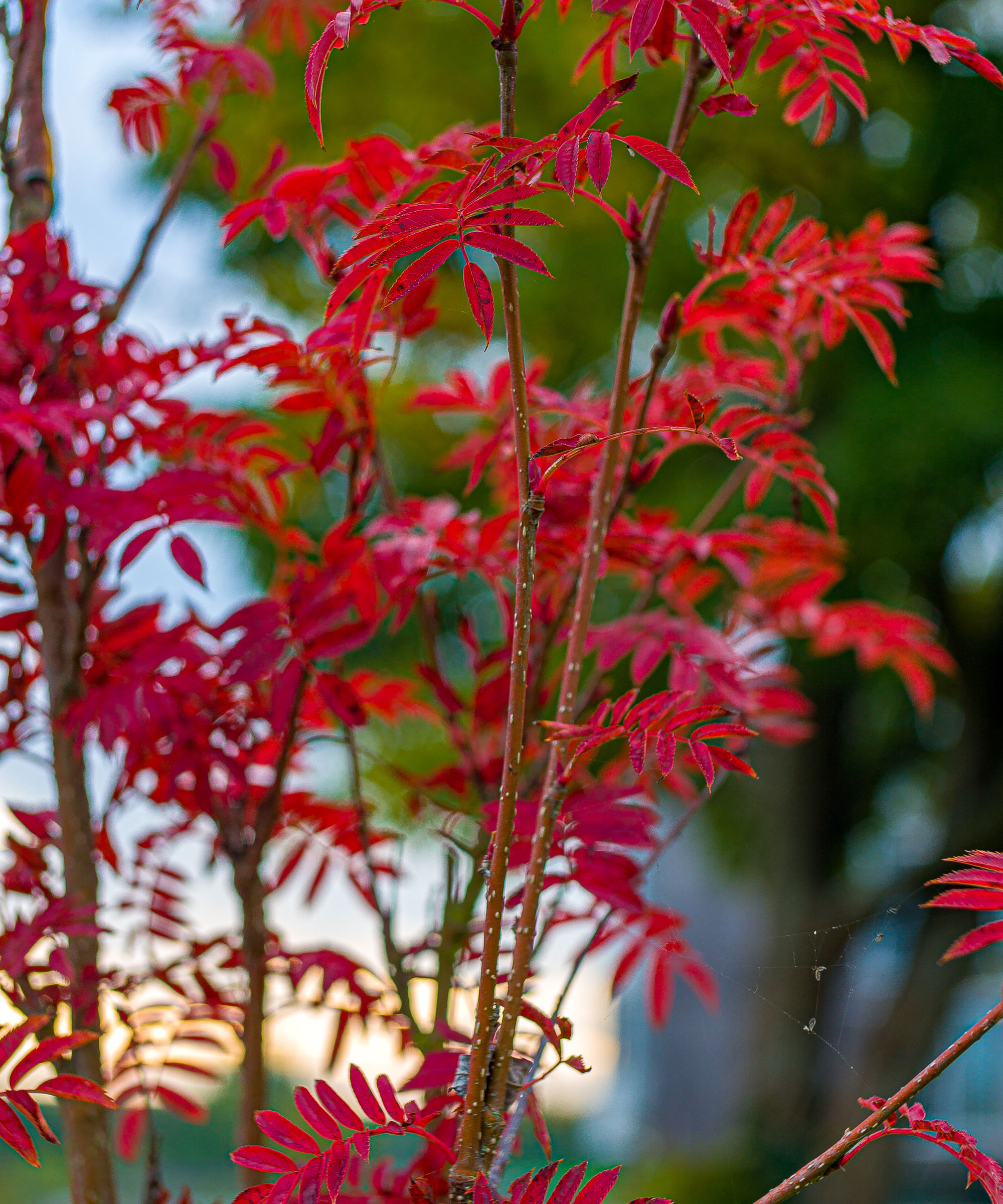
Sorbus commixta (Japanese rowan)
There are many deciduous trees that can be planted bare root. Good choices include acers (Japanese maple trees), amelanchier, sorbus, prunus, and crab apples. Also consider bare root shrubs like cornus, mahonia, berberis, deutzia, weigela, and viburnum.
Evergreens never really go dormant, so tend to be root-balled, where the root and soil ball is packed in sacking.
When it comes to flowers, roses are great bare root plants that become established quickly and should flower the following summer. Peonies are best bare root planted too, in rich and fertile soil.
If you're planting fruit bushes such as raspberries or blackcurrants you'll get the widest pick of varieties if you choose bare root plants. The same applies for fruit trees if you buy bare root plants, such as apple, pear, plum and cherry.
Whatever you decide on, you'll soon see that bare root plants are the way to go.
Be The First To Know
The Livingetc newsletters are your inside source for what’s shaping interiors now - and what’s next. Discover trend forecasts, smart style ideas, and curated shopping inspiration that brings design to life. Subscribe today and stay ahead of the curve.
Lifestyle journalist Sarah Wilson writes about flowers, plants, garden design and trends. She has studied introductory garden and landscape design and floristry, and also has an RHS Level 2 qualification in the Principles of Plant Growth and Development. In addition to homesandgardens.com and livingetc.com she's written for gardeningetc.com, Real Homes, Modern Gardens and Country Homes & Interiors magazines. Her first job was at Elle magazine, during which time a trip to the beautiful La Colombe d'Or in St-Paul-de-Vence led to an interest in writing about all things botanical. Later as lifestyle editor at Country Homes & Interiors magazine the real pull was the run of captivating country gardens that were featured.
-
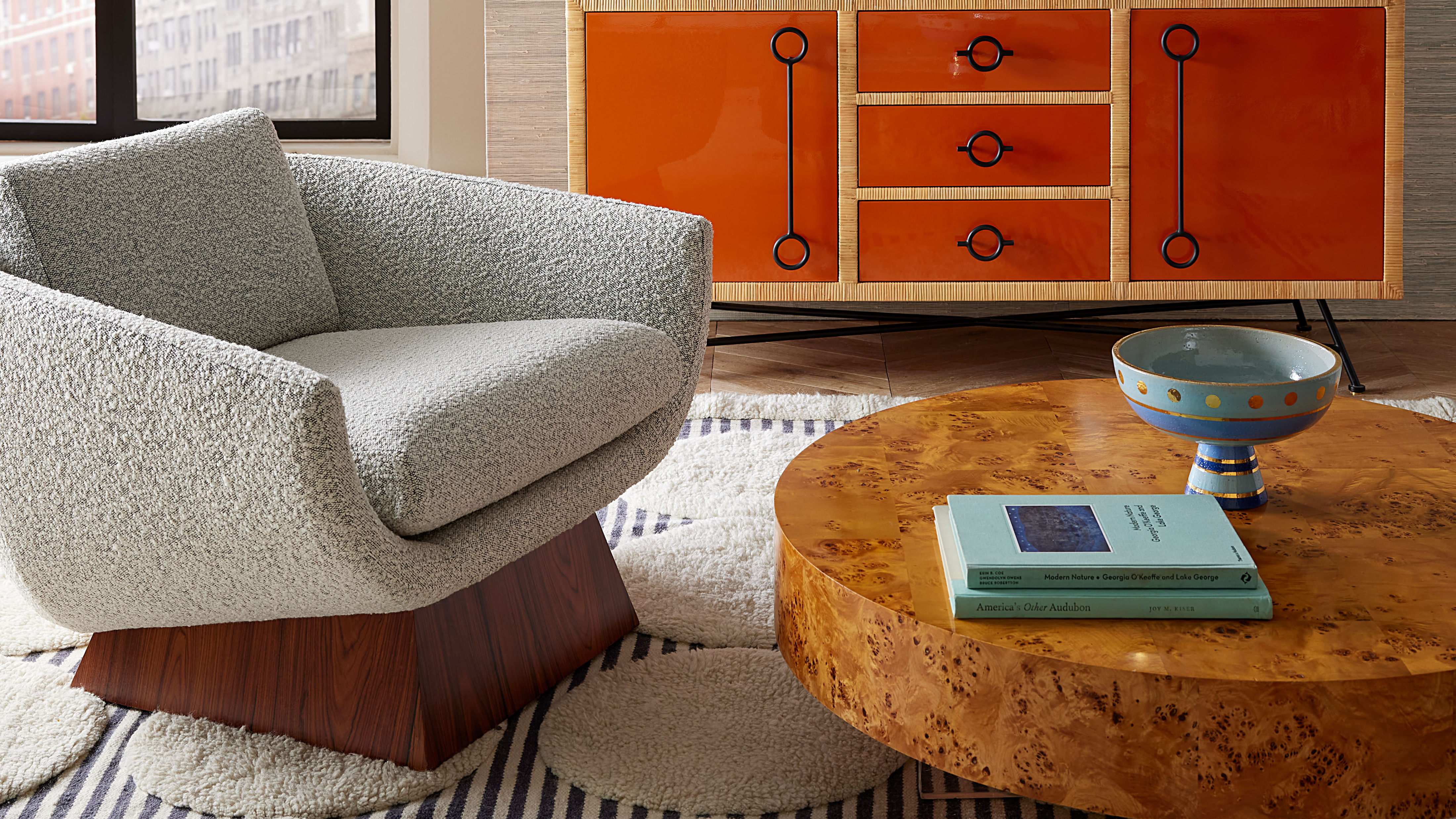 Burl Wood Decor Is 2025’s Most Coveted Comeback — Here’s How to Get the Storied Swirls for Less
Burl Wood Decor Is 2025’s Most Coveted Comeback — Here’s How to Get the Storied Swirls for LessIrregularity is the ultimate luxury, but you don’t need an antiques dealer to find it
By Julia Demer Published
-
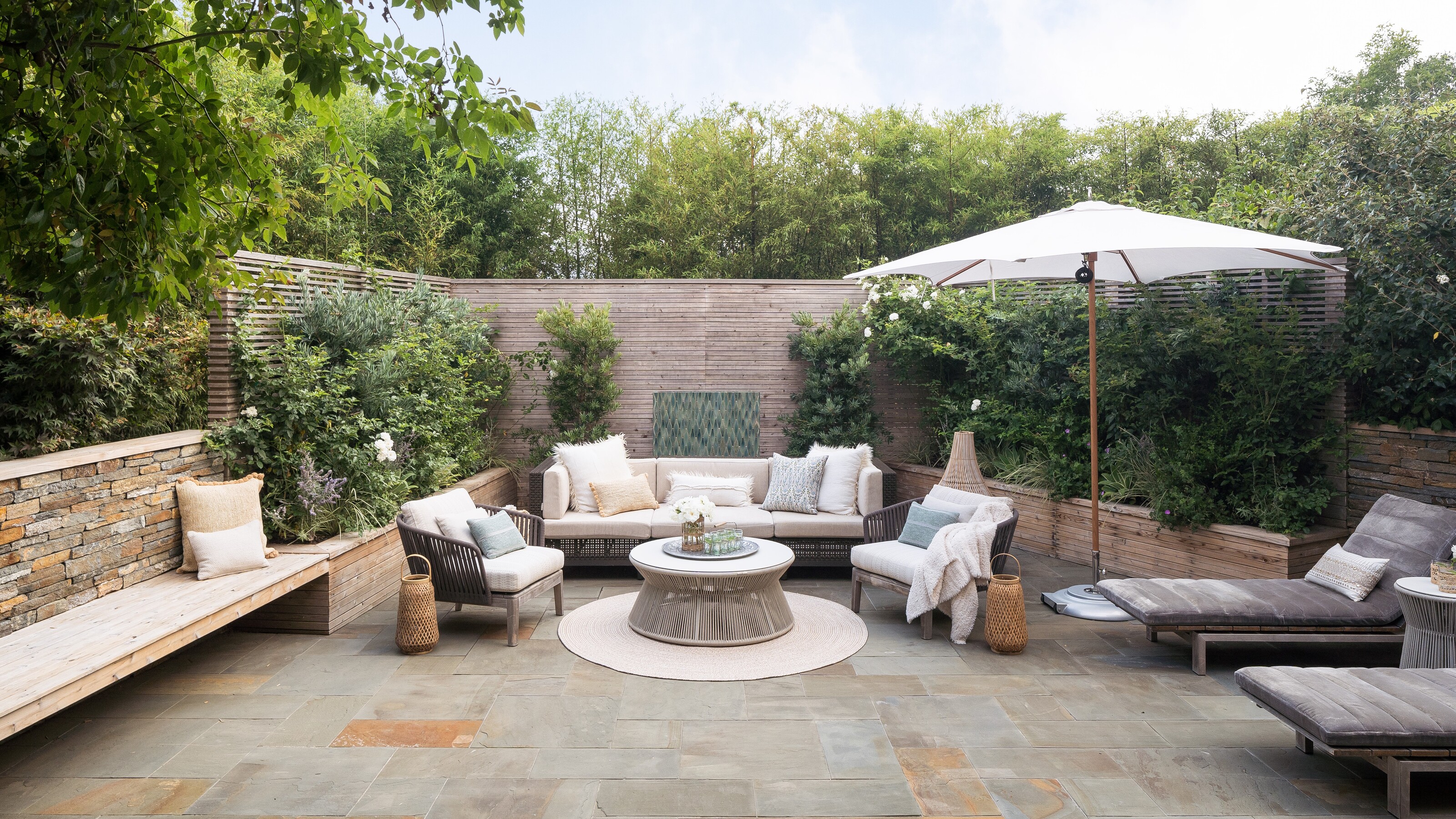 5 Garden Features That Instantly Add Value to Your Home — While Making Your Outdoor Space More Practical, too
5 Garden Features That Instantly Add Value to Your Home — While Making Your Outdoor Space More Practical, tooGet to know all the expert tips and tricks for making your backyard a standout selling point for your home.
By Maya Glantz Published


